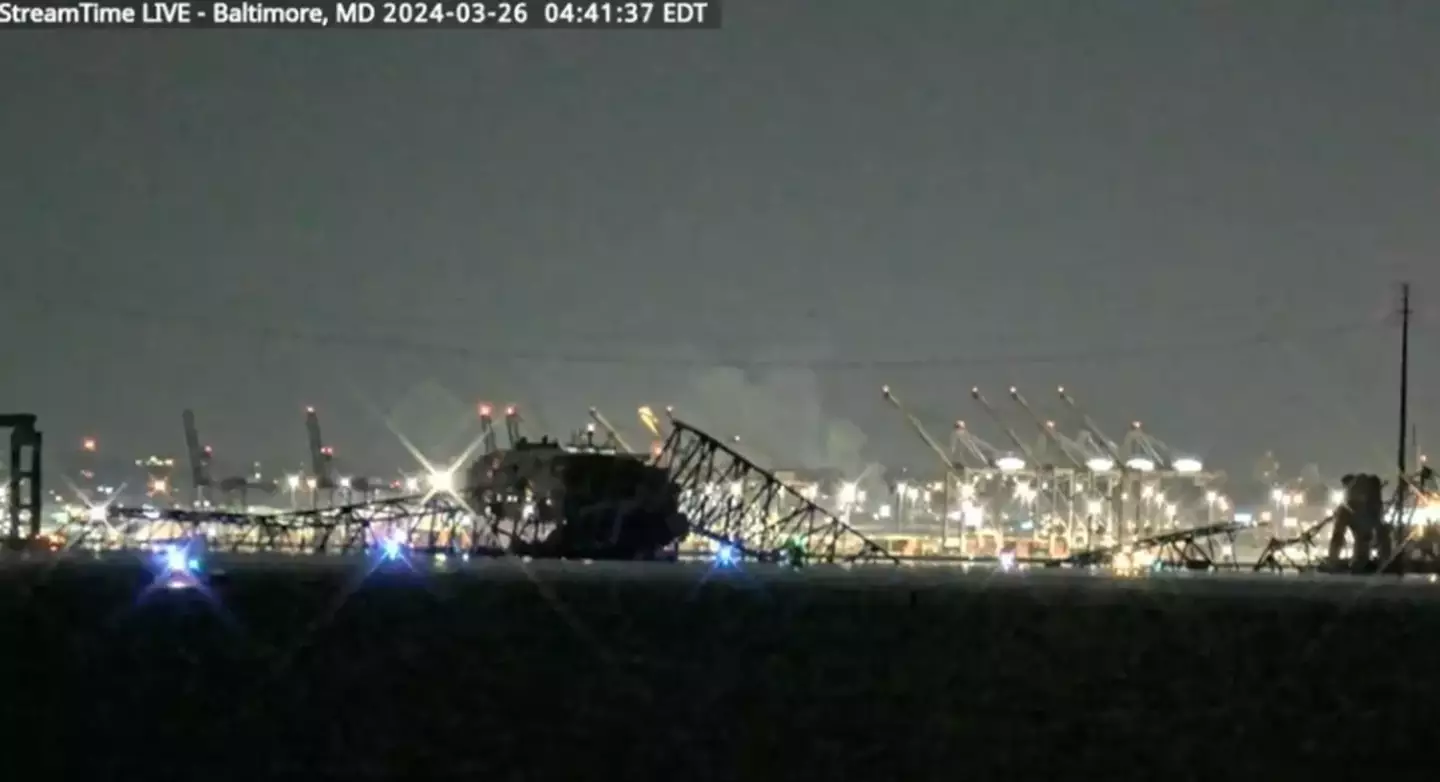
This morning (26 March), a state of emergency was called in Maryland, USA, as a container ship struck the Francis Scott Key bridge.
The impact destroyed the bridge instantly, as container ship Dali collided with the bridge at around 1.30am after departing the Baltimore port at 12.45am local time.

Although no-one onboard the ship was injured, it was stated by rescue services that 'several vehicles' and 'seven people' had fallen into the water.
Advert
The incident was later declared a 'mass casualty event', as the exact number of people on the bridge has not been determined yet.
Two people who had fallen into the icy water have been rescued since the collision, with the search on-going for others in the body of water.
As well as live footage, onlookers also managed to capture the incident unfolding, as one man was particularly shocked, filming the aftermath.
The shock event has sparked a number of questions though, with many wondering how this exactly happened.
Advert
A number of experts have weighed in on the situation, giving their educated opinions on what the cause of the fall of the bridge was.

Several experts spoke to Sky News, with each suggesting a different cause.
Human error
Professor Helen Sampson is an expert at the Seafarers International Research Centre at Cardiff University, and suggests that it may be a matter of human error.
Advert
She said: "Was there some sort of miscommunication or misunderstanding between the pilot and the crew?
"Or was there a pilot error?"
Sampson also pointed towards the time that it happened, as it was in the middle of the night, adding to the concern of tiredness.
Mentioning the element of fatigue, she continued: "It's almost always the case that we focus on human error at the individual level, it's almost always the case that there's a broader context which has resulted in that human error, like fatigue and the demands made on pilots or on crews."
Mechanical issues
A different maritime safety expert said the crash was 'most likely' due to the ship's failed mechanics.
Advert
Director of Maritime Risk and Safety Consultants Ltd, David McFarlane, told Sky News that the first thing he thought was the possibility of a 'sudden fault' with the ship's steering gear or engines.
He also said that human error was less likely due to the number of crew onboard.
"There should be no room for one-person errors because one of the other people should jump in and say 'hang on'," he explained.
"The most likely cause of this is a failure in machinery or steering gear, but we just won't know until the authorities have been on board.
Advert
"And even then, they're unlikely to say what's been going on for some considerable time."

Structural problems with the bridge
The Francis Scott Key bridge was opened almost 50 years ago, in 1977.
Named after the poet who wrote the words to the 'Star Spangled Banner', aka the American national anthem, the bridge was the third longest span of any continuous truss in the world before its collapse.
The steel structure was over 1.6 miles long, and Julian Carter, a structural and civil engineering expert, explained that these builds are 'simple' but 'very weak' at certain points.
Carter revealed: "It's what we call a continuous structure, every little piece is connected to another - and unfortunately it's a catastrophic collapse."
Engineering science expert at the University of Oxford, Professor Barbara Rossi, highlighted that the impacting force of 'Dali' on the bridge must have been 'immense' to cause the bridge to crumble completely.
She concluded: "We should not speculate around if such huge impact forces should have been taken into account at the design stage."
Featured Image Credit: PA / XTopics: US News, Baltimore bridge